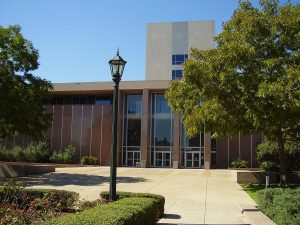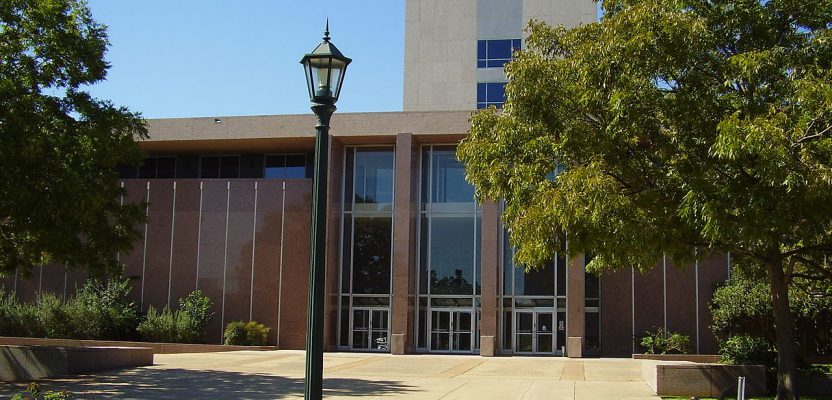Part 4 of 6: More Court Rulings
Editor’s Note: What will regulation, certification, and licensing of the surveying profession look like in the near and distant future?
Surveying is and always has been molded by external influences: markets, technologies, economic conditions, demographics, and competition from outside of the profession. Other professionals, consumers, and pro-sumers have found that the legacy mysteries of precise measurement are within reach (of course, while also wholly misunderstanding the professional and legal aspects of surveying). These developments have converged with recent re-examinations of a seemingly immutable element of numerous professions—licensing. Right or wrong, these developments need to be discussed.
Instead of ignoring the possibility of such changes, one of our regular contributors tackles the question, “What do we do next?” with a six-part series examining how the profession could prepare for what was previously assumed unthinkable. Al also provides suggestions on how the educational arm of the profession could prepare for a future that could be more certification-oriented than strictly regulated or licensed as it is today.
While xyHt neither agrees or disagrees with op-ed articles we run, we do endorse an open and frank dialogue on such important subjects.
You can read part 3 here, or start from beginning with part 1, here.
The effect of state regulation of photogrammetry and GIS
… (and probably the products of boundary surveying) is to discourage small firms from being able to operate without meeting the terms of each state’s regulations. State surveying boards frequently issue cease-and-desist orders to smaller firms and individuals who are performing work the boards consider to be within the state-regulated scope of the licensed practice of surveying. These firms are too small to undertake the time and expense of a lawsuit challenging the state board and the legislation upon which it bases its actions. Meanwhile, the big companies that might successfully fight the state in court using the arguments noted previously are essentially ignored in order to preserve the status quo. This approach does not always work.
In my opinion, the final nail in the coffin of state regulation of the surveying profession could stem from the following two cases: NC State Bd. of Dental Examiners v. FTC in the U.S. Supreme Court (574 U.S. 13-534, 2015) and Patel, et al. v. Texas Dept. of Licensing & Regulation, et al. in the Texas Supreme Court (No. 12-0657, Feb. 27, 2014). Both cases demonstrate that there is a limit to the state action exemption for anti-competitive actions by legislative bodies.
The North Carolina case was the result of the state’s Board of Dental Examiners deciding that teeth whitening, which was being performed by unlicensed persons, was within the regulated scope of dentistry. The Board subsequently sent cease-and-desist letters to scores of teeth whitening service providers and product manufacturers. Some recipients of these letters appealed to the Federal Trade Commission, which ruled that the dentistry board’s action was contrary to the FTC Act, primarily because the Board was not sufficiently supervised by the state. The Court said, “Because a controlling number of the Board’s decision makers are active market participants in the occupation the Board regulates, the Board can invoke state-action antitrust immunity only if it was subject to active supervision by the State.”

Two recent cases have been widely considered as having potential bearing on the future of professional licensing: NC State Bd. of Dental Examiners v. FTC in the U.S. Supreme Court (574 U.S. 13-534, 2015) and Patel, et al. v. Texas Dept. of Licensing & Regulation, et al. in the Texas Supreme Court [courthouse pictured (No. 12-0657, Feb. 27, 2014)].
The Court specifically rejected the Board’s argument that its actions were consistent with the state legislature’s policy to protect the public from harm, finding “a wealth of evidence … suggesting that non-dentist provided teeth whitening is a safe cosmetic procedure” [p. 4]. This sounds a lot like the case with mapping by non-surveyors, as found by the D.C. court in MAPPS et al. v. U.S.A.
To see how this affects state regulation, take, for instance, Florida’s Board of Professional Surveyors and Mappers, where seven of the nine Board members must be active licensed surveyors. This arrangement is fairly typical among the states. For this body to be able to avoid monopolistic behavior under the Sherman Anti-trust Act, it must be directly supervised by the state. According to the ruling, “The Court has identified only a few constant requirements of active supervision: The supervisor must review the substance of the anticompetitive decision …; the supervisor must have the power to veto or modify particular decisions to ensure they accord with state policy …; and the mere potential for state supervision is not an adequate substitute for a decision by the State…” [p. 18].
The only way to fix the problem is for a state surveying board either to have a majority of its members from outside the profession or for the state to specifically review and decide on every action the board takes that could limit competition. Both options put non-surveyors in charge of the profession. Is that really what we want?
The Texas case is a bit more limited in its scope but equally applicable to the state regulation of the surveying profession. In this case, hair removal providers, what they call “threaders,” were being required to have 750 hours of training in cosmetology from approved sources in order to be licensed by the state. The threaders argued in court that most of the training required had nothing to do with the practice of their profession, nor could it be generally perceived as protecting public health. The threaders felt this onerous requirement senselessly burdened their ability to practice without doing anything to protect the public.
The Texas Court agreed, finding two conditions to be true that are directly applicable to the issue of state regulation of photogrammetry and mapping as part of the field of surveying. First, they found that the “Commission-approved beauty schools were not required to teach threading techniques” and, second, they found that “threading techniques are not required to be part of the mandated tests” [p. 29].
The same situation exists with those states that regulate surveying by relying on the results of NCEES exams. The Fundamentals of Surveying exam has only 4-6 questions on photogrammetry and 5-8 questions on GIS out of 110 questions. There are no questions at all on these topics in the Principles and Practices of Surveying exam. And then there is the common requirement for a four-year degree in an approved course of study and four years of apprenticeship under a licensed surveyor to qualify for the exam. How much of this course of study is in photogrammetry and general mapping?
Doubling down on state regulation is not the way to enhance or preserve the surveying profession. Not only is the profession ignoring the fact that state regulation has effectively been overturned for the reasons stated above, but it is at the whim of an increasingly volatile body politic that has significant factions opposed to any state regulation. Florida and other states have already seen bills introduced and passed by one or more state legislative committees to completely deregulate the surveying profession. All you have to do is aggravate, say, Google or Microsoft, and their big dog lobbyist will punt the surveying profession off the field. We must quickly develop the new structure for the geomatics profession.
In parts 5 and 6, we will discuss an alternative that both avoids the problems of state-by-state regulation by market actors and provides greater control for the members of the surveying profession to govern themselves.
Next in part 5: Proposing A National Program for Surveyor Education and Certification

